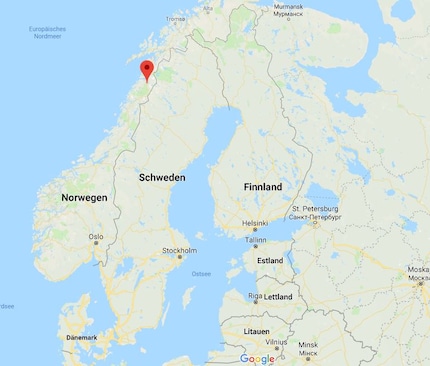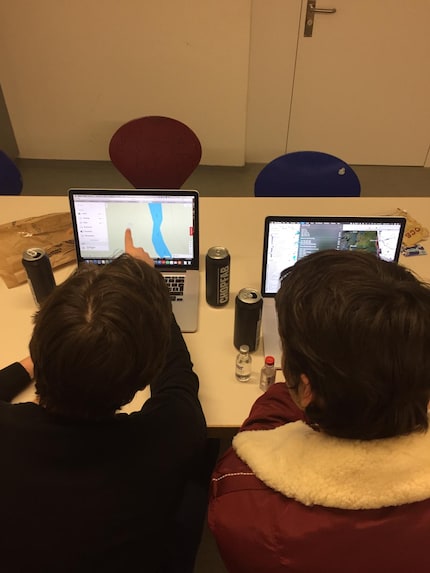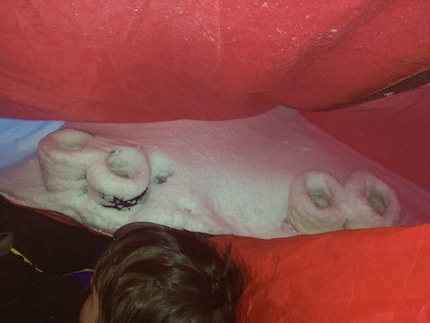
Background information
Two photographers, one objective: crossing a Norwegian national park on foot
by Patrick Bardelli

Arthur and Jannik are two photography apprentices. Last winter, they took advantage of their holidays to conquer northern Norway. Here is their diary.
We, Arthur and Jannik, are 19 years old. We are studying photography at an art school in Zurich. Both passionate about nature, we have often travelled through the mountains and forests of Switzerland, usually accompanied by a camera, a tent and a stove. Our idea to explore the Arctic Circle came to us during a camping trip in Graubünden during the last autumn holidays.
The idea germinated little by little as we hiked. In the end, our choice fell on Norway, and we'll be going there for a fortnight during the 2019 winter holidays. We're already dreaming of days spent walking in the snow and nights in tents admiring the Northern Lights.
Back at school, we start searching the internet for information about Norway, often during our lessons and under the dubious eyes of our teachers. We started by looking for the most northerly point of Norway accessible by train. It's Bodø, a small port town on the edge of the Arctic Circle.
But because Bodø is a small town, it's not the only one.
But because Bodø is a civilised town and we are warriors at heart, we prefer to choose the Saltfjellet-Svartisen National Park as our destination. You can get there by train, passing in particular through the small village of Røkland on the edge of this park of more than 2,100 km2.

On a Norwegian blog, which Google helps us translate as best we can, we discover the cabane Bukkhågbua in Saltfjellet-Svartisen National Park. We contact the local tourist office by phone, who tell us that the hut still exists and that it is accessible free of charge and without a key.
As our plans became clearer, we invited classmates, friends and acquaintances to join us in this adventure. They all considered our idea crazy or suicidal, so we decided to run the project as a pair. With the Bukkhågbua hut as our new concrete objective, our plan finally took shape after many missed lessons and sacrificed Friday evenings.
.
On 10 February, we'll board the first train of our 43-hour journey. We'll arrive in Røkland, Norway, at around 7am, where we can begin our walk to the hut.
We expect to walk up to three days to cover the 25 km from the station to the hut. However, we would like to be able to reach it in two days. GPS is essential for orientation here. The snow makes the hiking trails completely invisible. In "normal" Swiss summer conditions, we could cover these 25 km during the 6 hours of sunshine we get every day in Norway. But in February, we have to reckon with almost 90 cm of snow. And in addition to the equipment we still have, we'll also have to carry our food supplies for the next eight days on this first stage in the wilderness. So we estimate that it will take us two to three times as long, hence the three days mentioned above.

The hut will serve as our base camp for five or six days. From there, we'll set off on one- or two-day excursions in the area during which we'll photograph the wildlife and landscape.
Depending on how long it takes us to get to the hut, we'll leave on 18 or 19 February to get to Røkland station, where we'll take the train on the evening of 21 February to get back to Switzerland by the afternoon of 23 February at the latest. So that's our plan.
As we buy our equipment and refine the analysis of our route (for which we have created a GPX file for GPS with several hundred stages), we notice that many questions still remain unanswered.
We decide to test our equipment ourselves by going to spend a weekend in Amden, on Lake Walenstadt. In the next episode, we'll explain what role our snow-covered boots played.

To find out how Arthur and Jannik came to tell Galaxus about their experiences, it's here.
We are two photographers in training at the F+F (School of Art and Design) in Zurich.
Since we are very fascinated by nature, we are much in the mountains and forests of Switzerland on the road. Mostly with camera, tent and a gas stove in the luggage.
Interesting facts about products, behind-the-scenes looks at manufacturers and deep-dives on interesting people.
Show all
Background information
by Arthur Gamsa und Jannik Kaiser

Background information
by Arthur Gamsa und Jannik Kaiser

Background information
by Arthur Gamsa und Jannik Kaiser